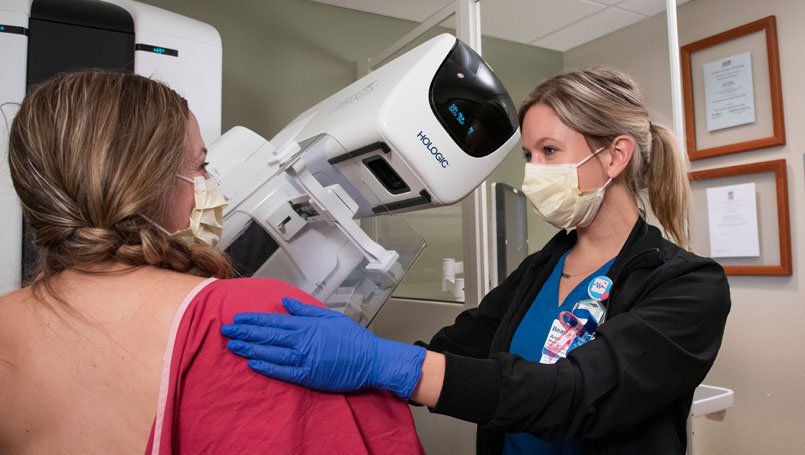Breast Cancer is a malignant growth that creates from bosom tissue. Indications of bosom malignant growth may remember a knot for the bosom, an adjustment of breast shape, dimpling of the skin, liquid coming from the areola, a recently reversed areola, or a red or flaky fix of skin. In those with far off the spread of the infection, there might be bone torment, swollen lymph hubs, windedness, or yellow skin. Hazard factors for creating bosom disease incorporate being female, weight, an absence of actual exercise, liquor abuse, chemical substitution treatment during menopause, ionizing radiation, an early age from the outset monthly cycle, having kids late throughout everyday life or not in the slightest degree, more established age, having an earlier history of bosom malignancy, and a family background of bosom malignancy.
Women’s Cancer Screenings Plummeted During Pandemic
Around 5–10% of cases are the aftereffect of a hereditary inclination acquired from an individual’s folks, including BRCA1 and BRCA2 among others. Breast Cancer most regularly creates in cells from the covering of milk pipes and the lobules that supply these channels with milk. Malignant growths creating from the channels are known as ductal carcinomas, while those creating from lobules are known as lobular carcinomas. There are in excess of 18 other sub-kinds of bosom malignant growth. A few, for example, ductal carcinoma in situ, create from pre-intrusive sores. The finding of bosom disease is affirmed by taking a biopsy of the unsettling tissue. When the finding is made, further tests are done to decide whether the disease has spread past the bosom and which medicines are destined to be successful.

Breast Cancer and cervical malignancy screenings dropped forcefully among low-pay minority ladies during the COVID-19 pandemic, the U.S. Communities for Disease Control and Prevention says. That could prompt postponed disease analysis, wellbeing results and an increment in existing inconsistencies, the organization cautioned. The new discoveries “support the need to securely keep up with routine medical care administrations during the pandemic, particularly when the medical services climate meets COVID-19 wellbeing rules,” said lead study creator Amy DeGroff, a CDC wellbeing researcher. Contrasted and the past five-year midpoints for April, screening tests got by ladies through CDC’s National Breast and Cervical Cancer Early Detection Program for underserved ladies were 87% lower for Breast Cancer and 84% lower for cervical malignant growth in April 2020. Decreases in bosom disease screening went from 84% among Hispanic ladies to 98% among American Indian/Alaskan Native ladies.
Decreases in cervical malignant growth screening went from 82% among Black ladies to 92% among Asian Pacific Islander ladies. Breast Cancer growth screenings were 86% lower in metro regions, 88% lower in metropolitan regions and 89% lower in country regions contrasted with the past five-year midpoints, the discoveries showed. Decreases in cervical disease screenings were 85% in metro regions, 82% in provincial regions and 77% in metropolitan regions. Screening rates had begun to recuperate in all gatherings by June 2020, which was the finish of the examination time frame. Elements that may have added to the decays included screening site terminations and transitory suspension of bosom and cervical malignant growth screening administrations because of COVID-19, as per the CDC.
Almost certainly, stay-at-home requests/proposals and dread of contracting COVID-19 deflected ladies from booking demonstrative tests, the investigation writers recommended. “This investigation features a decrease in disease screening among ladies of racial and ethnic minority bunches with low salaries when their admittance to clinical benefits diminished toward the start of the pandemic,” DeGroff said in a CDC news discharge. “CDC urges medical services experts to assist with limiting deferrals in testing by proceeding with routine malignant growth evaluating for ladies having side effects or at high danger for bosom or cervical disease,” she added. DeGroff noticed the advantages of the Early Detection Program, saying it can assist ladies with defeating hindrances to wellbeing value by instructing them about the significance of routine screening, tending to their interests about COVID-19 transmission, and assisting them with securely getting to screening.
